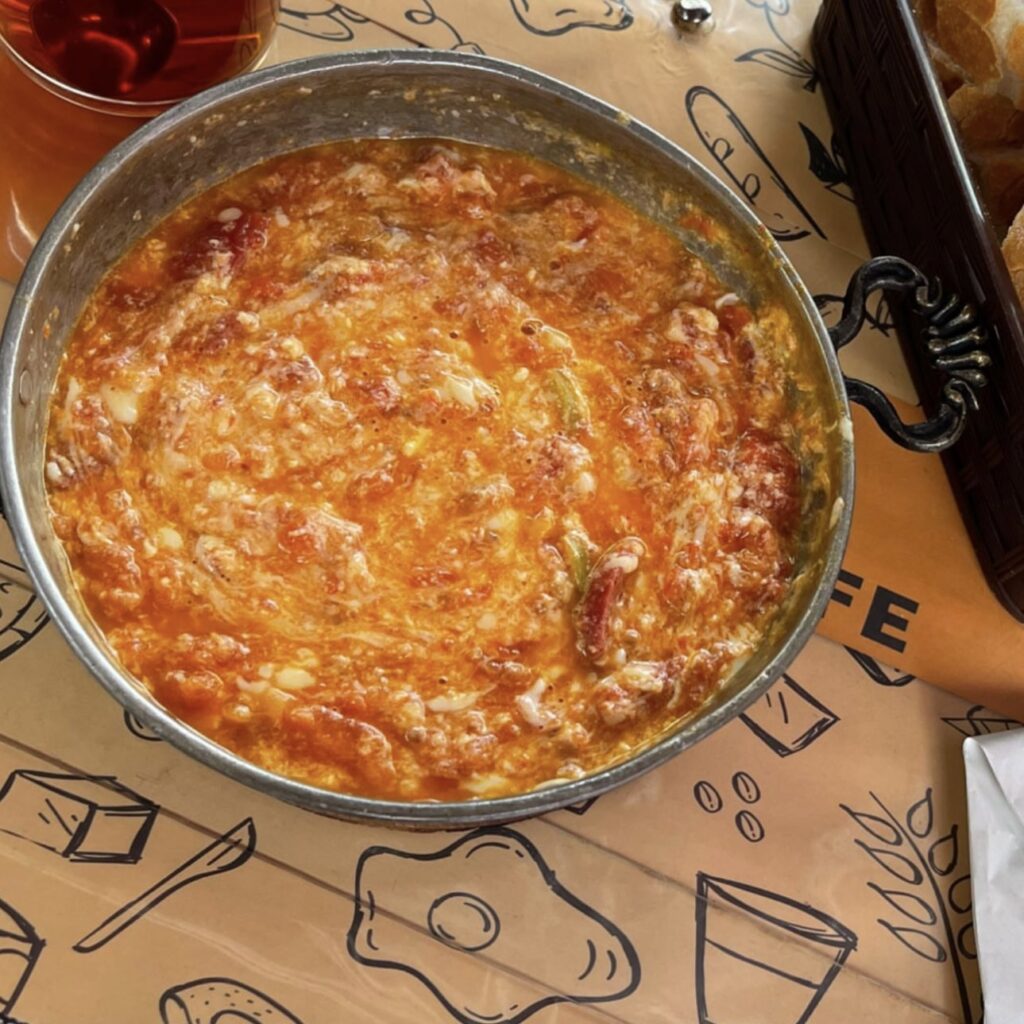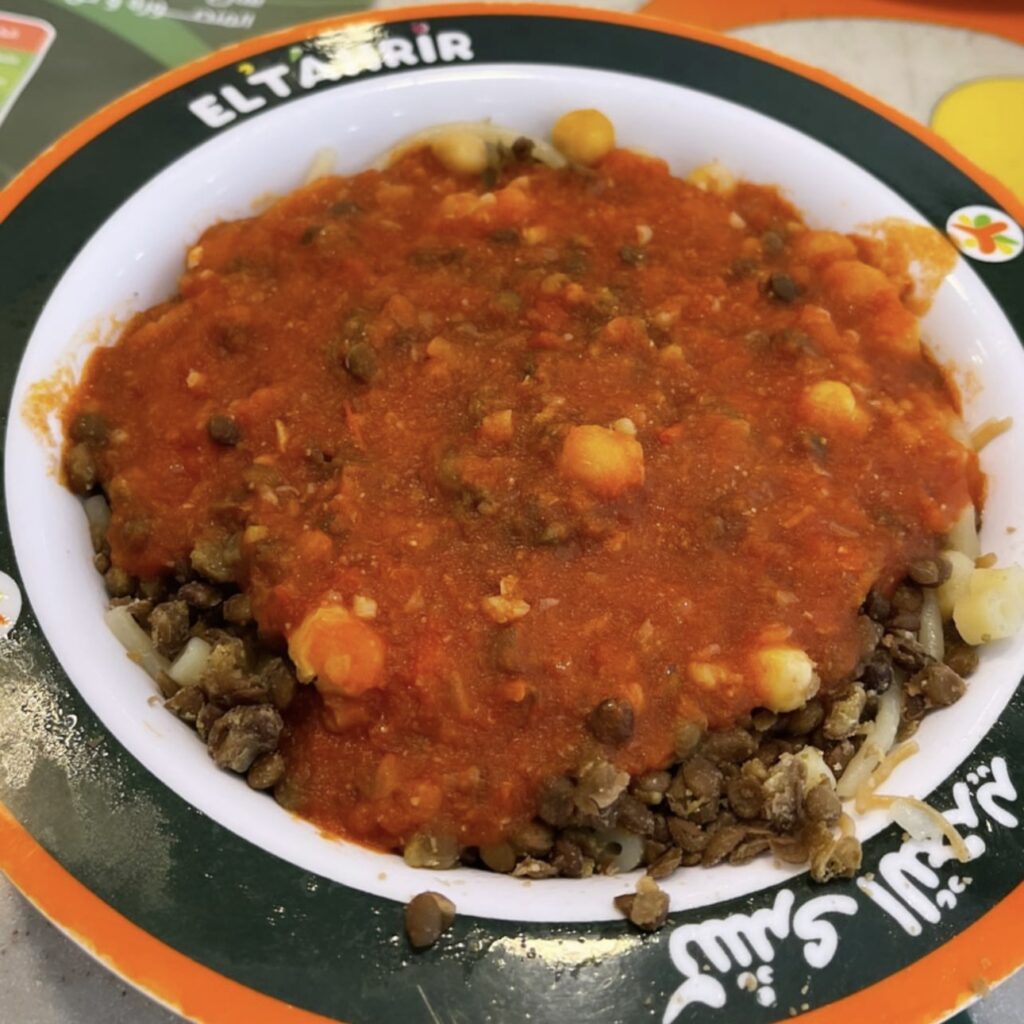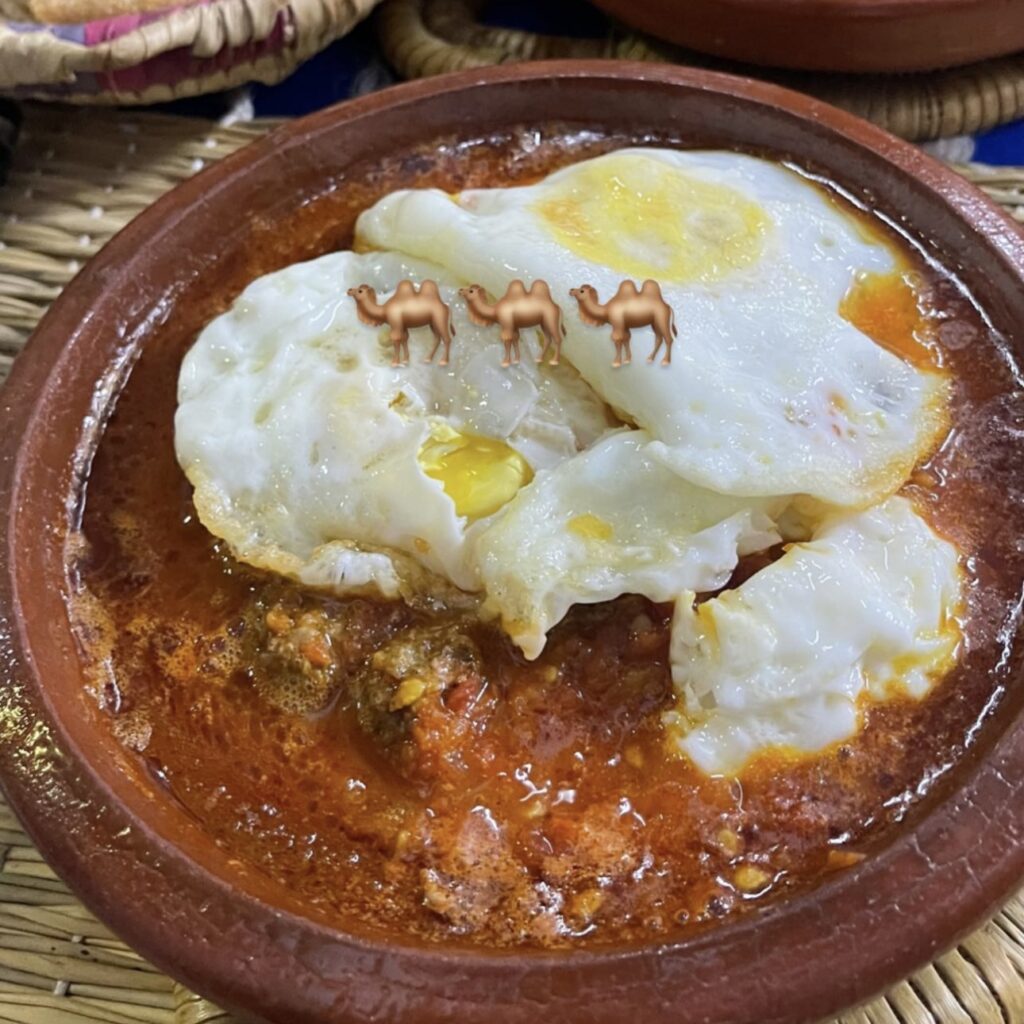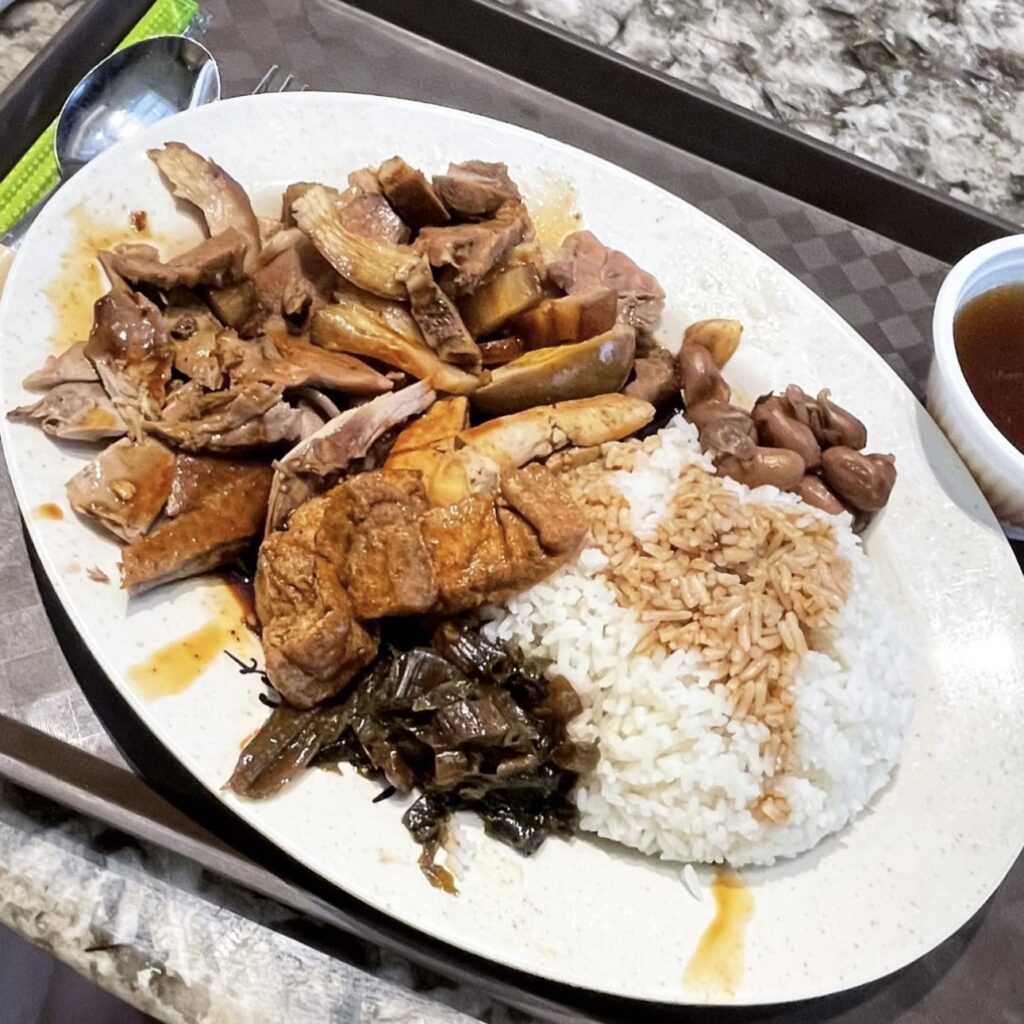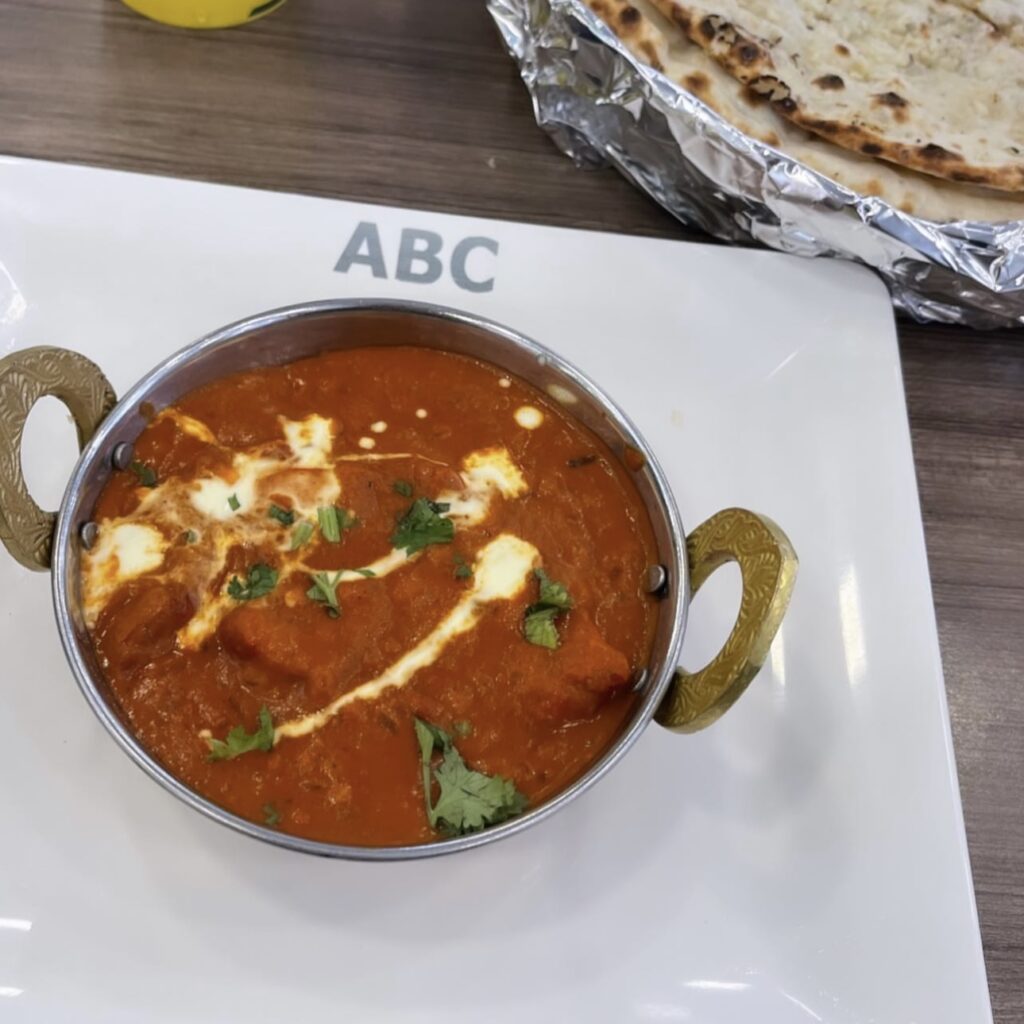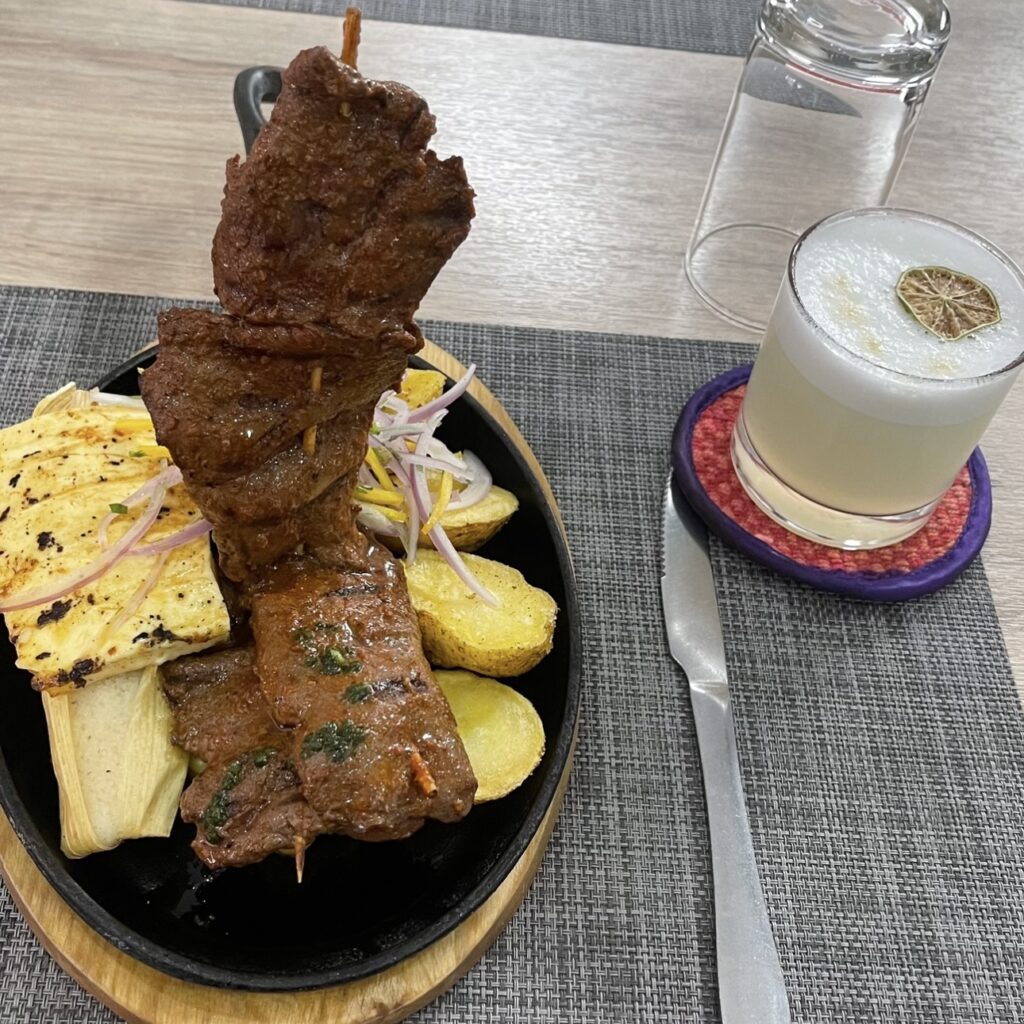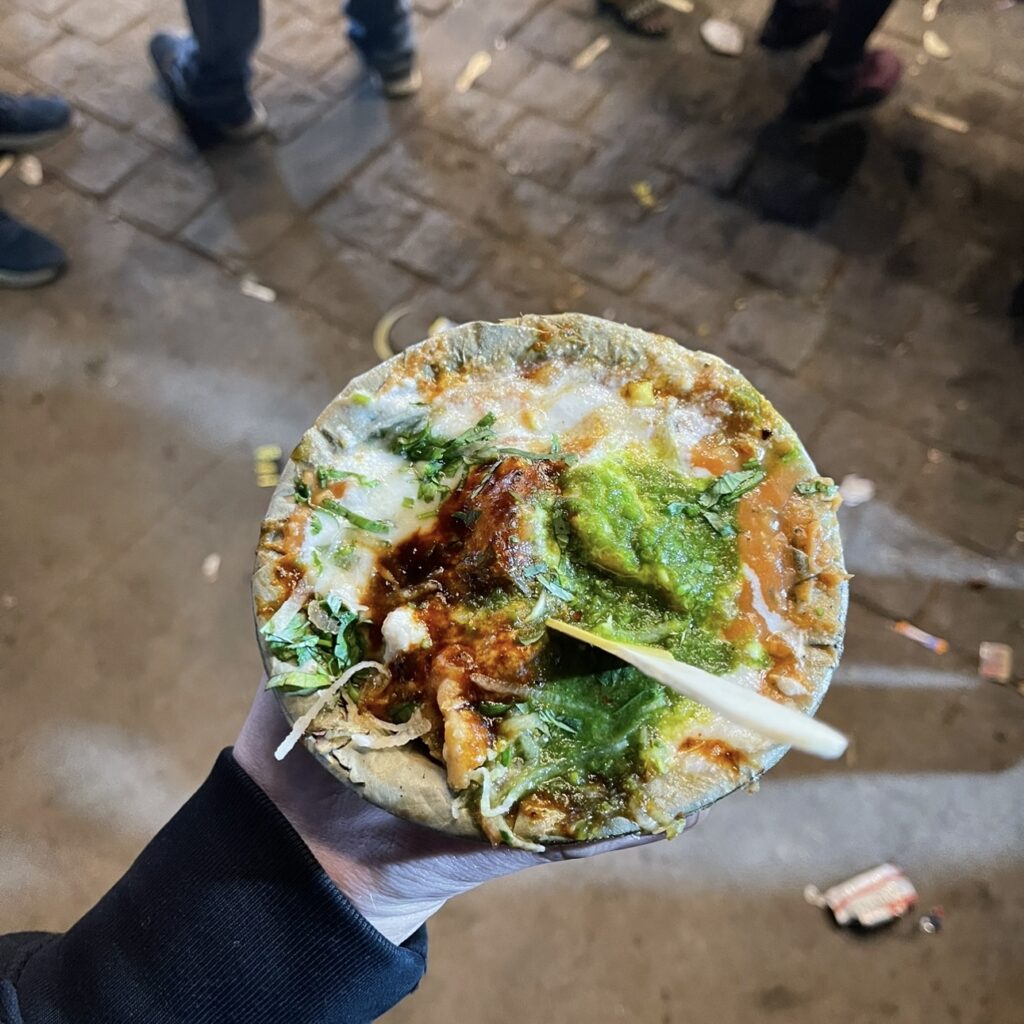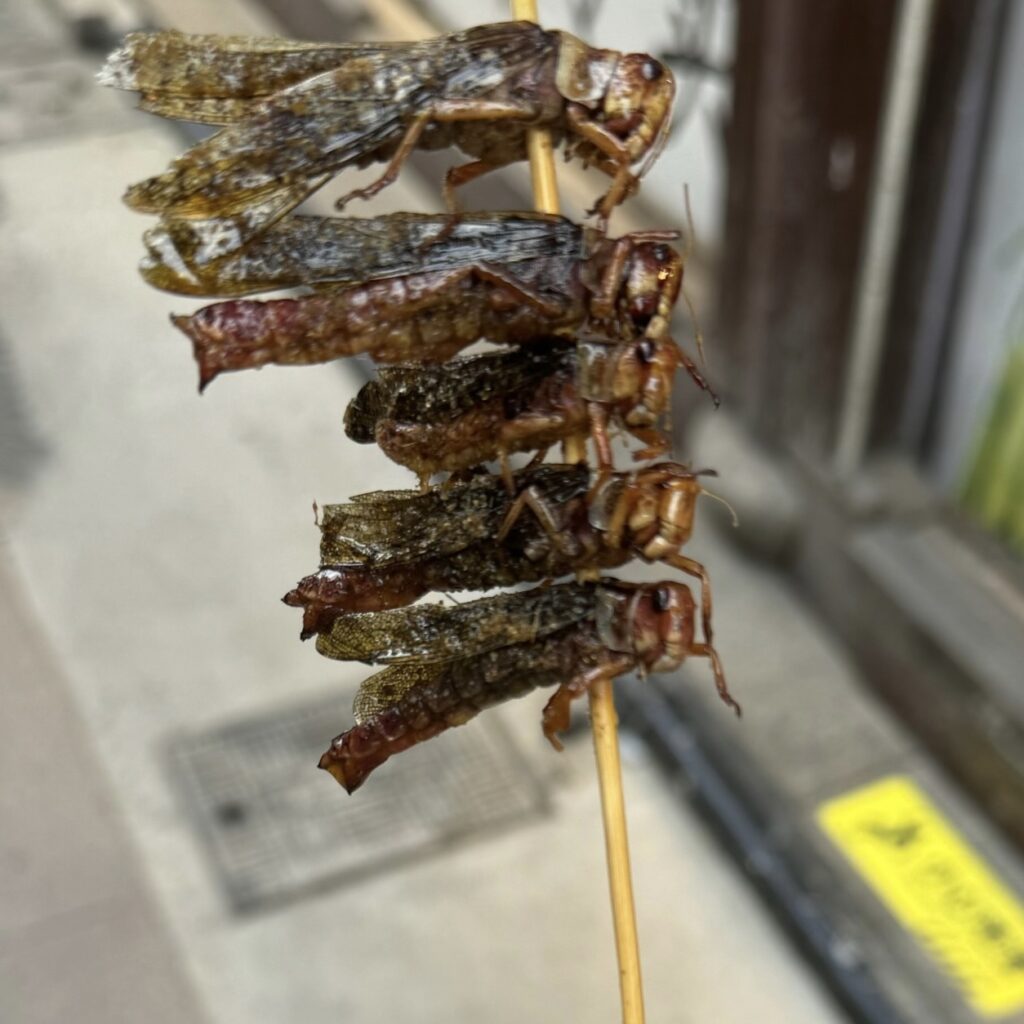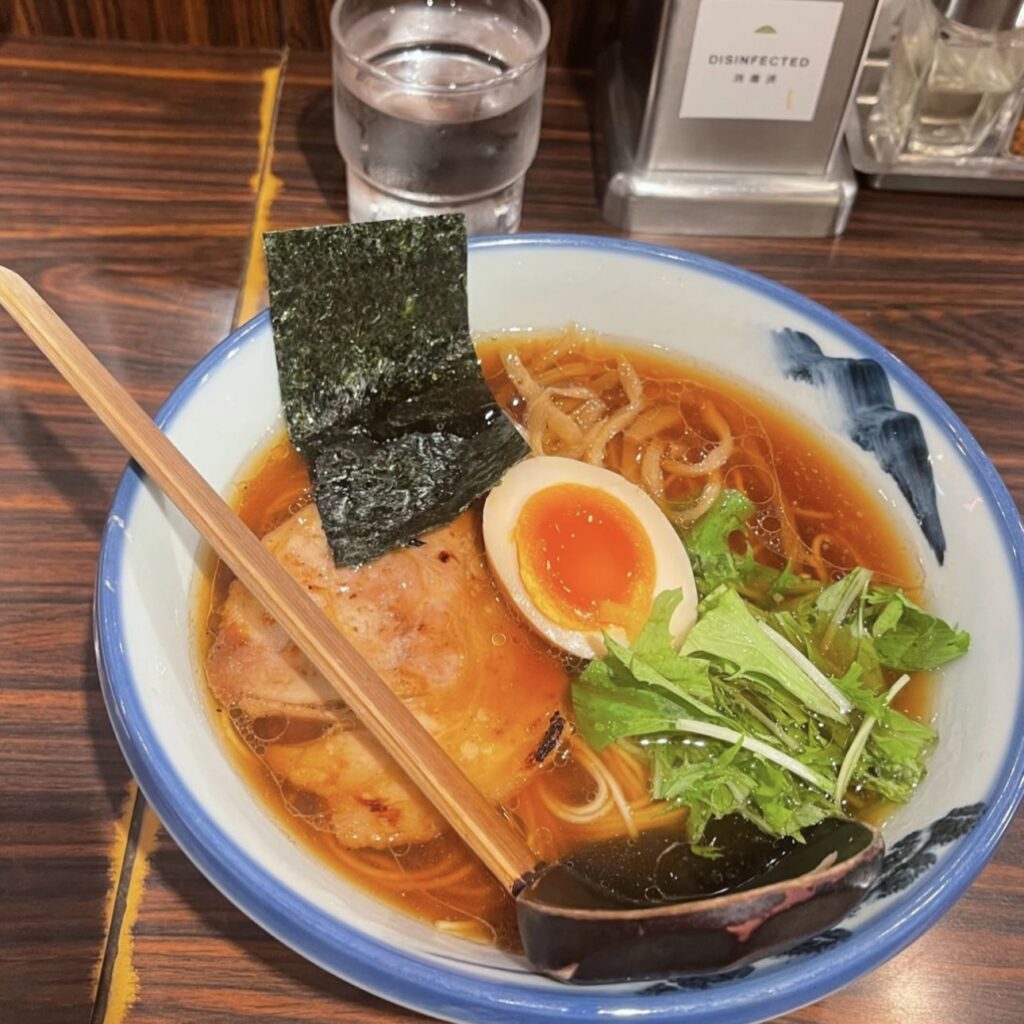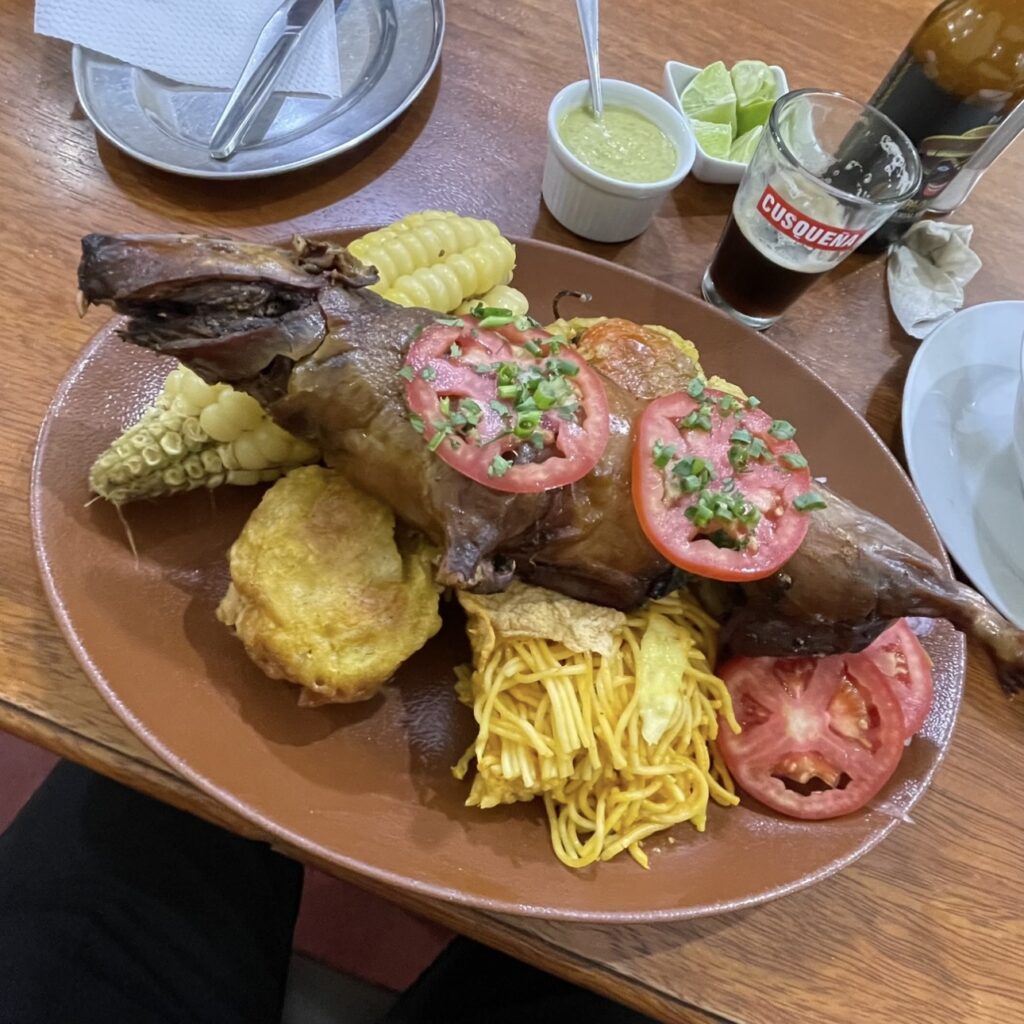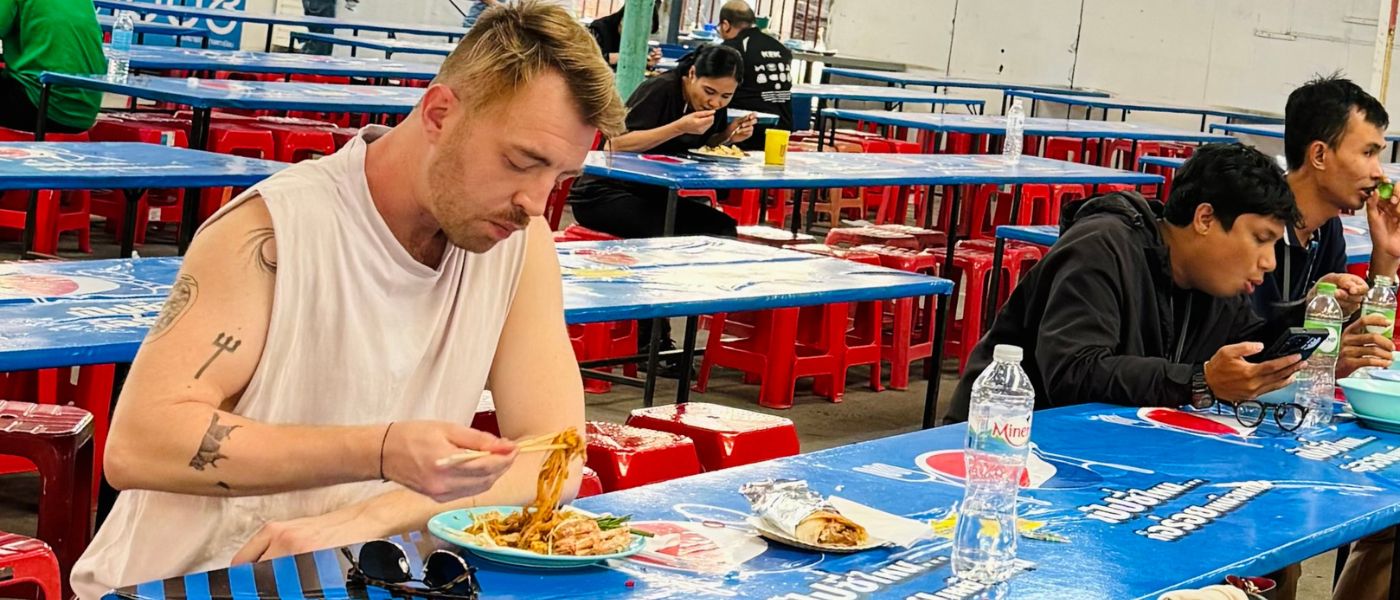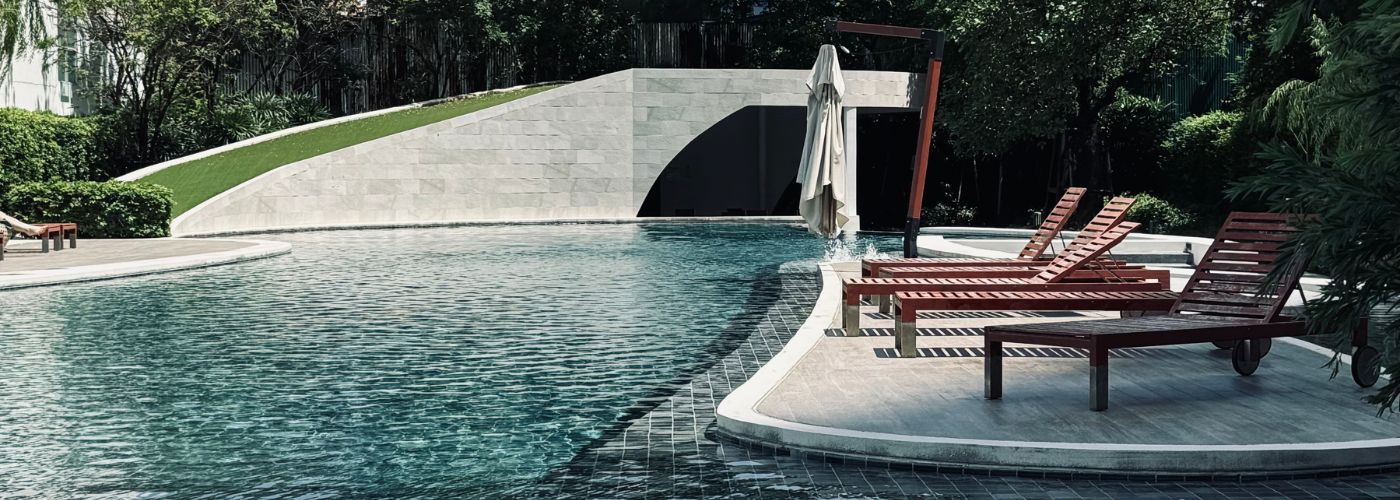I used to think adventure was about climbing mountains or partying until the morning in my 20s. Turns out, the biggest leap I ever took was biting into kokoreç at a Turkish street stall in Istanbul when I was 26: grilled lamb intestines stuffed with seasoned offal, spinning slowly over charcoal. The vendor’s proud smile as he sliced the crispy, aromatic roll and handed it to me in a piece of bread was worth more than any guidebook explanation. That single bite didn’t just challenge my Hungarian palate. it shattered every assumption I’d carried about what food could be, who I could trust, and how far curiosity could take me when words failed.
Growing up hungarian: comfort food and limited horizons
Hungary’s culinary landscape shaped my childhood with the predictability of a metronome: goulash, rántotthús, potato dumplings, lángos, töltöttkáposzta, bundáskenyér and other oily meals rotated through our weekly menu with military precision. Heavy, hearty, and designed to fuel bodies through harsh winters and harder times, Hungarian cuisine reflects a history of survival rather than experimentation. My grandmother would say, “Eat what’s on your plate, you own what you ate,” not as encouragement but as an economic reality. In the 1990’s post-communist Hungary, food wasn’t about pleasure or discovery, it was about sustenance. The idea that someone might travel thousands of kilometers just to taste something new would have seemed absurd, almost offensive to a generation that remembered rationing.
“What you eat, you own”: lessons from an unhealthy kitchen
Growing up in Eastern Europe meant understanding food through the lens of scarcity. “What you eat, you own” wasn’t just a saying, it was survival wisdom passed down through generations who had lived through wars, famines, and political upheaval. You ate what was available, what was affordable, and what would keep you alive until tomorrow. This mentality created a cuisine built on pork fat, potatoes, and preservation techniques designed to stretch ingredients through lean months. Vegetables were often pickled or boiled into submission. Spices were viewed with suspicion, like why mask the taste of perfectly good meat?
But here’s what frustrated me most: this narrow-minded approach to eating didn’t end with my grandparents’ generation. Even today, people I know in Hungary continue eating the same unhealthy garbage, not out of necessity, but out of sheer unwillingness to try anything different. Friends would rather grab another greasy or oily quick meal or some junk food, rather than venture into anything that didn’t fit their limited definition of “real food.” It’s not about nutrition, I’m no dietitian, and don’t get me wrong: a sajtos-tejfölös lángos is still gold, it’s about the stubborn refusal to expand their horizons beyond what they’ve always known.
My family’s relationship with food was purely functional, meals were more like fuel, not experiences. The dinner table was where we filled our stomachs, not where we explored new flavors or celebrated culinary creativity. Looking back, I realize this practical approach to eating had inadvertently built walls around my palate, walls I wouldn’t even know existed until I began to tear them down thousands of kilometers from home.
First taste of the unusual: opening up to new flavors
The first crack in my culinary walls didn’t happen in some exotic location, it happened in Budapest, of all places. My ex-boss Kinga decided to take our team out for indian food, and I remember thinking it was a terrible idea. Indian food? In Hungary? What was wrong with a nice Hungarian restaurant.. but sitting in that Indian restaurant, tasting my first proper curry, feeling the complex layers of spices I’d never experienced before, something shifted. The heat, the aromatics, the way flavors built and evolved in my mouth, it was a fvcking revelation. Here was proof that food could be art, not just sustenance. I fell in love with foreign cuisines that night, and suddenly my worldview felt embarrassingly small.
But the real test came when I traveled to Egypt alone at 27. Far from European cuisine and standards, I found myself completely out of my culinary comfort zone. Here, locals invited me to try dishes that would have sent my Hungarian friends running: tender pigeon stuffed with rice, dolmah wrapped in vine leaves, the chaotic mix of koshari with its layers of rice, lentils, and pasta, kersha (tripe) in rich stews, lesan (tongue) sliced thin and seasoned perfectly, and cow feet simmered until they fell off the bone. Each meal was shared with locals who watched my reactions with genuine curiosity and pride. They weren’t trying to shock my tourist ass with weird food, they were actually sharing their everyday cuisine, their comfort food, their family recipes. It was the moment I realized that my Hungarian upbringing, while grounding me in certain values, had also limited my understanding of what food could be. These weren’t exotic dishes designed to challenge foreigners; they were delicacies that had been perfected over centuries, enjoyed by generations who understood flavors I was only just discovering.
Eating around the world
In the coming years, I traveled extensively and my appetite for adventure only grew. Each destination brought new challenges to my expanding palate, and I found myself saying yes to things that would have horrified my younger self. How narrow minded I was, oh my god..
Camel in Morocco
In Marrakech’s medina, camel tagine challenged everything I thought I knew about meat. Slow-cooked until tender, seasoned with preserved lemons and olives, it was nothing like the heavy, over-salted dishes of my youth. Here was proof that protein could be both exotic and refined, adventurous and sophisticated.
Guinea pig and alpacca steak in Peru
In the Andes, guinea pig isn’t exotic, it’s basically a traditional protein source that has sustained indigenous communities for over 5,000 years. Sitting in that small local restaurant in Cusco, watching the preparation with the same reverence my grandmother reserved for Sunday roast, I understood that “strange” is just another word for “unfamiliar.” I tried also the alpaca in Arequipa, grilled over an open fire with nothing but salt and local herbs. The meat was lean, clean-tasting, and prepared with a respect for the animal that put my factory-farmed Hungarian childhood meals to shame.
Century eggs in China
The black, gelatinous century egg looked like something from a horror movie to my Hungarian eyes. But breaking through that dark exterior revealed flavors complex and umami-rich, nothing like the simple fried eggs of my childhood breakfasts. It was my introduction to the idea that time itself could be an ingredient.
Insects in Thailand
Beyond those first crickets came a parade of six-legged delicacies: grasshoppers seasoned with chili and lime, silk worm pupae that tasted like nutty popcorn, bamboo worms that crunched like the best potato chips. Each bite expanded my definition of what food could be. Call me crazy, but every time and travelled further and tried new meals, I had this weird feeling, that now I do it on purpose: chasing the dopamine which comes from trying something unfamiliar, something new. It became a hobby and I’ve started to chase this on purpose.
Chat Bhandar, India
Varanasi felt like stepping into another universe. The scent of the streets and the unusual traditions surrounding life and death immediately stirred my heart. What truly shook my senses, though, was a Chaat Bhandar, a famous Indian street food made from a mix of crispy fried dough, boiled potatoes, chickpeas, yogurt, tamarind chutney, and a blend of spices. Thankfully, it was a pleasant surprise, and I managed to enjoy India without any food poisoning.
Horse meat in Kyrgyzstan
Perhaps this could be the most challenging for someone from a horse-loving culture (referring to hungarian culture, I afraid of horses for a weird reason), but in the home of a kyrgyz family, horse meat wasn’t controversial, it was honored protein from an animal that had given its life to sustain theirs. Prepared simply and shared with genuine hospitality, it taught me that cultural context transforms everything, including taboos.
That Penang table: how strangers became teachers through food
My most profound food experience wasn’t about eating something unusual, it was about how food created connection and learning in the most unexpected way. It was around brunch time in a busy hawker center in Penang, Malaysia. Seriously, if you have the chance to visit Penang, stay there for a couple of days and eat. The place was packed, and I needed a seat. I spotted a table where a local mom and her son were eating, with a couple of empty chairs, so I approached them and asked if I could join them. What followed was one of the most educational meals of my traveling life, made possible by the fact that they both spoke excellent English. What could have been an awkward shared-table situation became an impromptu masterclass in Malaysian cuisine.
The mother immediately took me under her wing, ordering dishes I should try and explaining not just what they were, but how to eat them properly. She showed me the right way to mix the chili oil into my laksa, how to use roti to scoop curry, and why drinking hot tea between bites of spicy food actually helped. When I started sweating from the heat and spice, she laughed and shared the local wisdom that had never occurred to my European mind: “Eat spicy in the heat! It cools you down.” She was right, after the initial fire, I felt cooler than I had all morning. Her son chimed in with his own food recommendations, proud to share his culture’s cuisine with a curious foreigner.
Through food and conversation, they taught me lessons my hungarian upbringing never could: that spicy food in hot climates isn’t masochism, it’s practical cooling technology developed over generations, and also that sharing meals with strangers isn’t something to fear, it’s how communities are built. That hospitality and curiosity about each other’s cultures can turn a simple brunch into an unforgettable experience.
Why travel reshapes your palate and your mind
Sitting at that table in Penang, sharing food with people whose names I never learned and whose language I couldn’t speak, I understood something fundamental about food and travel. Every dish I’d eaten around the world, from that first cricket in Bangkok to the camel tagine in Marrakech had been preparing me for moments of pure human connection. Travel doesn’t just expose you to new foods; it forces you to confront the limitations of your own cultural assumptions. Growing up in Hungary taught me that food was functional, that exotic was unnecessary, that different was suspicious. But traveling taught me that these weren’t universal truths, they were just the boundaries of my small experience.
When you’re raised in a cuisine culture built on survival and simplicity, stepping into the complex flavor profiles of Thai street food or the ceremonial aspects of a Moroccan feast doesn’t just expand your palate, it expands your capacity for understanding difference as richness rather than threat. Each unusual food I tried became a small act of rebellion against the fear-based eating of my childhood. Each shared meal with strangers became proof that curiosity about others’ customs leads to connection, not conflict. Each time I said yes to something my Hungarian grandmother would have recoiled from, I was choosing growth over comfort, experience over safety.
The irony isn’t lost on me that I had to travel to the other side of the world to learn what hospitality really meant, when Hungarian culture has its own deep traditions of welcoming guests. But sometimes you need distance from your origins to see them clearly, and contrast to understand what you’ve inherited versus what you’ve chosen. Food became my universal language, the tool that let me communicate respect, curiosity, and appreciation in places where my words failed. Whether I was fumbling with chopsticks in a Seoul on my first trip to Asia or learning to eat with my hands in India, the act of sharing meals created bridges that crossed every gap language left open.
That’s the real gift of adventurous eating while traveling: it’s not about bragging rights or shocking friends with stories of exotic consumption. It’s about training yourself to approach difference with curiosity instead of judgment, to find common ground in our shared need for nourishment, and to understand that every culture’s relationship with food tells a story worth listening to.
In the end, food didn’t just feed my body during those travels, it fed my capacity for connection, understanding, and growth. Every time I sit down to a meal now, whether it’s familiar Hungarian comfort food or something I’ve never seen before, I carry with me the lessons learned at tables around the world: that sharing food is sharing humanity, that hospitality needs no translation, and that the willingness to try something new is the first step toward understanding someone different from yourself.
